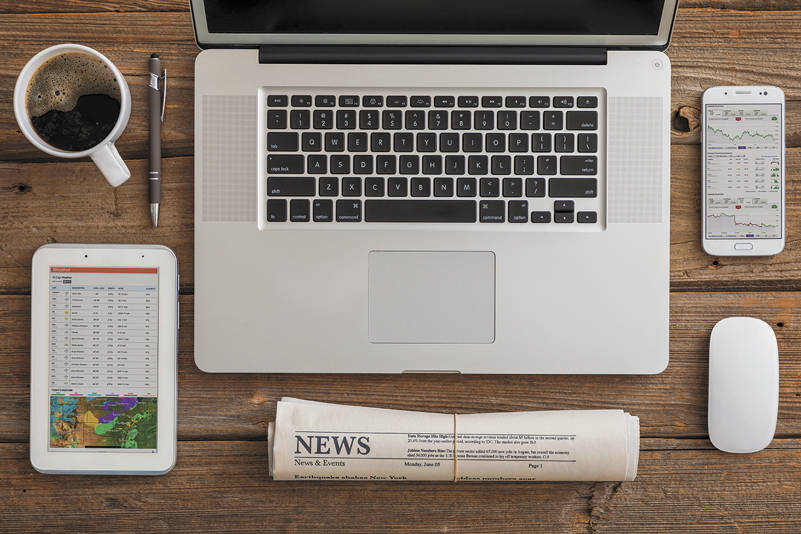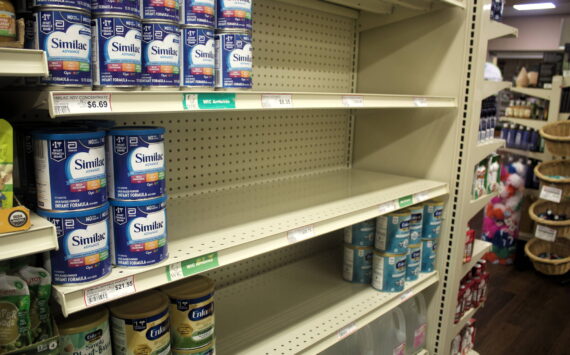By Morf Morford
Tacoma Daily Index
Anyone remember those days, not so long ago, when we all thought that if we all had access to information, arguments about everything from baseball scores to tax rates in different countries would cease because, in some near-magical way, we would all have access to incontrovertible facts.
Fast-forward to 2020 and we have access to information few could have imagined possible.
We are overwhelmed, in fact. Information overload has become our baseline reality to such a degree that many of us withdraw or become ever more selective about what we take in. Some of us are so selective that we might pick one news source to trust just to keep our sanity.
Remember those “low information” voters from four years ago?
More and more of us are moving in that direction – if only to escape the tsunami of info-noise, endless editorials and dire warnings about what would happen to the economy, our daily lives and our basic rights if “those people” win.
What we need, and what we have needed all along are some basic facts. No opinions, no speculations and no immense, worldwide, multi-layered conspiracies.
Oddly enough, more and more news providers describe themselves, or at least market themselves, as fact-based and objective. Some are, but some don’t even attempt it.
The ones that scream the loudest that they are, in fact, the only providers of the real truth are almost certainly the ones with the largest stake, or even the highest levels of influence from questionable sources.
Watch out, for example, for those sources, or even those commercials, that appeal to what we already know, and presumably, love. These messages appeal to our emotions and are a pure attack on our preferences, and what we already believe and care about.
These operate on our feelings and confirm what we already know and care about; that’s why they are called confirmation biases. These messages confirm that, no matter what else that is crazy or disrupting about the world, at least this message is (something like) proof that we are right and were right all along.
One term that was popular a couple years ago and pops up now and then, but is certainly decreasing, is the idea of “being on the right side of history”.
Who, after all, does not want to be on the “right side of history”?
That would be the side that, years from now, when people talk about a crisis in the past, whether it is racial justice, income inequality, recycling or even a particular taste in music or fashion, we can be proud of our stance for (or against) a certain movement or trend.
The problem however, is that every one of us, from white supremacist to LGBTQ activist, from Proud Boys to Antifa, considers themselves a defender or advocate for “the right side of history”.
I’ve done a fair amount of historical research and writing, and have been considered a “historian” by many, but my main conclusion about history is that it is immensely complicated, often contradictory and many times not thoroughly settled or final in any sense.
Consider some of the biggest conflicts of the 20th Century – the two world wars.
Most historians and war analysts see the onerous, if not vindictive, conditions of the Treaty of Versailles (28 June 1919) which drew up both the conditions of the end of First World War and behavior of Germany in the years to come –https://en.wikipedia.org/wiki/Treaty_of_Versailles – as leading directly to the passions and resentments that came to fruit in what became World War II.
In other words, the “war to end all wars” became instead essentially a training ground for a series or wars to follow.
From Spain in the 1930s, to Viet-Nam in the 1970s and Afghanistan and other places ever since, what was the best, preferable or even least-worst “side of history”?
In the business world, we have equally muddled choices.
What seemed like a good idea or policy, or even was a good idea at the time, in retrospect seems terrible or at least naïve.
Back in the 1960s and ‘70s, “disposable” single-use items, from pens to shopping bags to plastic wrap on just about everything from shirts to fresh fruit seemed like the greatest idea ever to keep items fresh and clean, and above all, convenient.
And the plastic worked great – exactly as described. It kept our food fresh and ready for us, it kept items at the store from being damaged or handled.
And it lasted for as long as we wanted it to – if not longer.
And that was the problem. It turns out that very little plastic is recyclable or re-usable.
Those so handy plastic wrappers ended up everywhere; in our wilderness areas and in virtually every crevice of our oceans, which means that nano-bits of plastic are in our food chain, in our water ways and in our bloodstreams. https://www.plasticsoupfoundation.org/en/plastic-problem/plastic-soup/plastic-is-everywhere/ or https://www.magazine.columbia.edu/article/plastic-plastic-everywhere#
As one article put it, it was the most useful and affordable product ever invented, and yet it now represents one of the gravest threats to the environment, our quality of life and even our physical health that humanity has ever seen.
So what then, or even now, would be the “right side of history”?
Plastic is still, no matter how much we may dislike it, is immensely useful, practical and even life-saving. In 2020, for example, much if not most PPE (Personal Protective Equipment) is made of plastic.
Where would we be without it? And how would we have coped if we did not have it the past 70 or so years?
My intent is not to impose guilt about our use of plastic (though a bit more care would be good for all of us) after all, who among us can go a day without handling plastic? I certainly cannot. I touch several plastic items long before breakfast every day.
For better or worse, plastic is a “fact” of our lives.
Thousands, if not millions of lives have been saved thanks to plastic, and perhaps no other substance (except water presumably) has been so embedded in our daily lives.
Yet at the same time, this exact substance threatens virtually every life-form on the planet.
We live in a fictional world if we ignore these challenges, but almost every item we use and touch today, from plastic wrap to lithium batteries comes from somewhere and goes somewhere. The cost of each one of these products is far different from the purchase price we pay.
What’s the story we tell ourselves about the things we use every day?
Maybe it’s time to tell ourselves a different story. https://usafacts.org/m/change-the-story.






